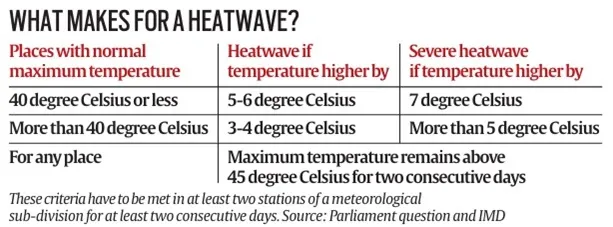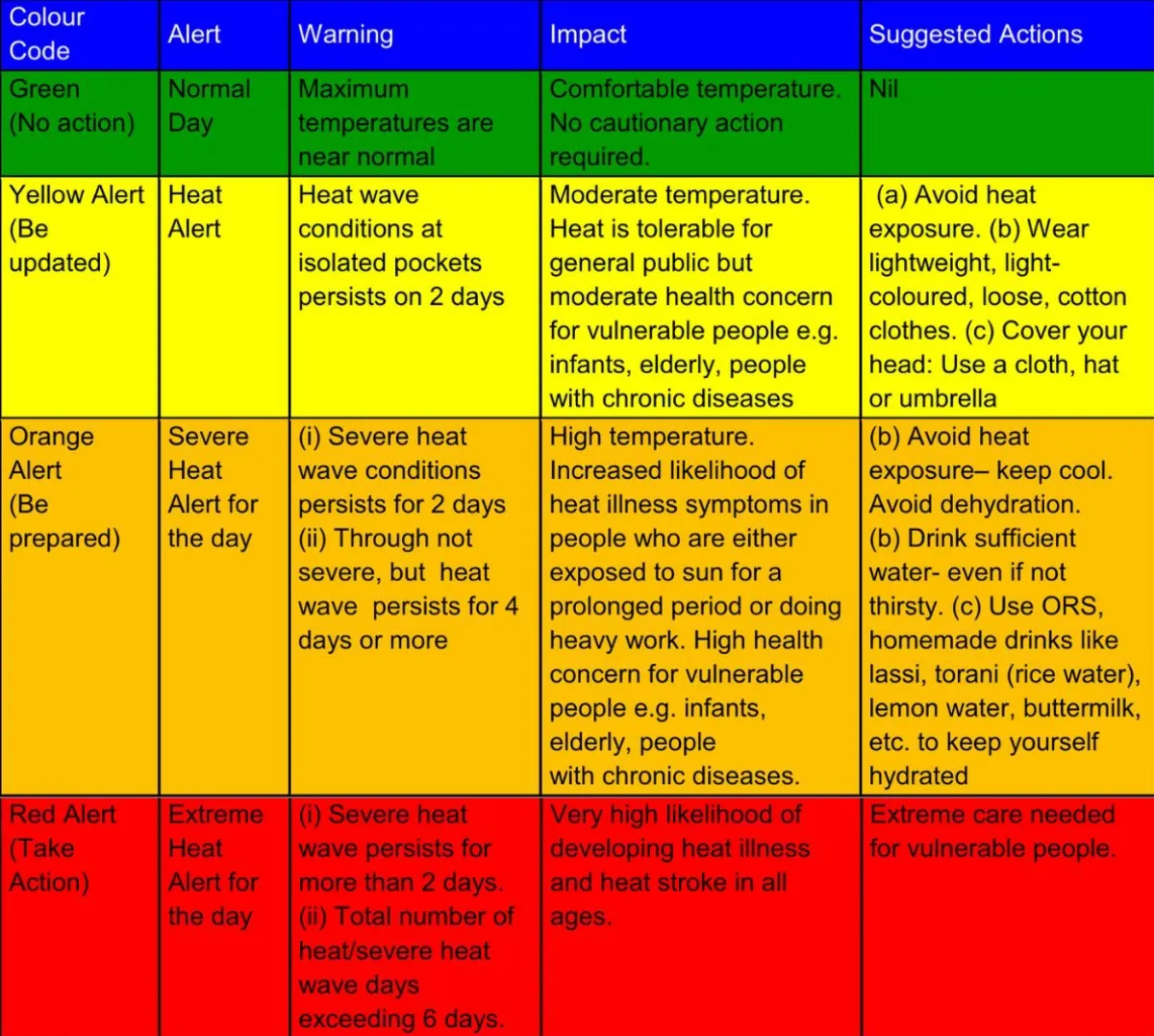Free Courses Sale ends Soon, Get It Now


Free Courses Sale ends Soon, Get It Now



Copyright infringement not intended
Picture Courtesy: https://indianexpress.com/article/explained/everyday-explainers/imd-heatwave-red-alert-meaning-9338749/
Context: Delhi, Punjab, and other parts of North India have experienced temperatures around and over 44°C, causing a heatwave red alert.
What is a Heatwave?
|
Heatwaves affect various parts of India, including Punjab, Haryana, Delhi, Uttar Pradesh, Bihar, and others. Certain regions, like Rajasthan and Vidarbha, experience extreme temperatures above 45°C during peak months like May. |
Criteria for Heatwave Alerts

|
May is identified as the peak month for heatwaves in India. During this period, temperatures soar to their highest levels, intensifying the impact of heatwaves across various regions of the country. |
Heatwave Red Alerts

Precautions for Heatwaves
Must Read Articles:
Source:
|
PRACTICE QUESTION Q. Analyze the potential impacts of climate change on the frequency, intensity, and duration of heatwaves in different regions of the world. How might changing atmospheric conditions, such as rising global temperatures and altered precipitation patterns, influence heatwave characteristics in the future? |
© 2024 iasgyan. All right reserved